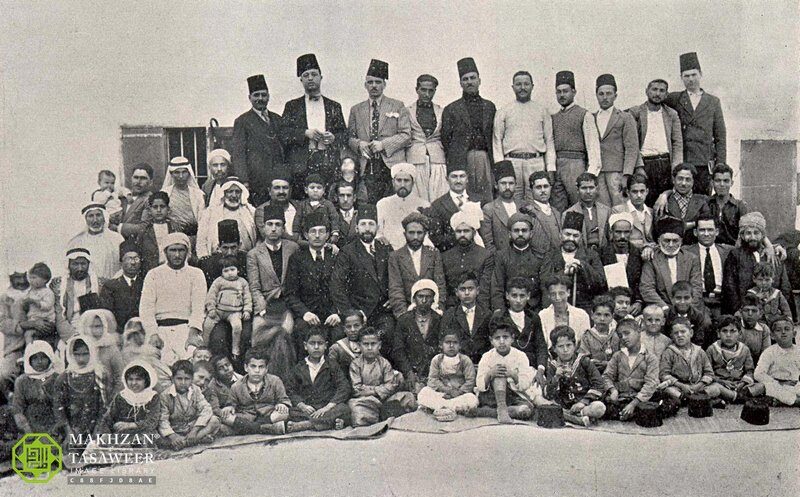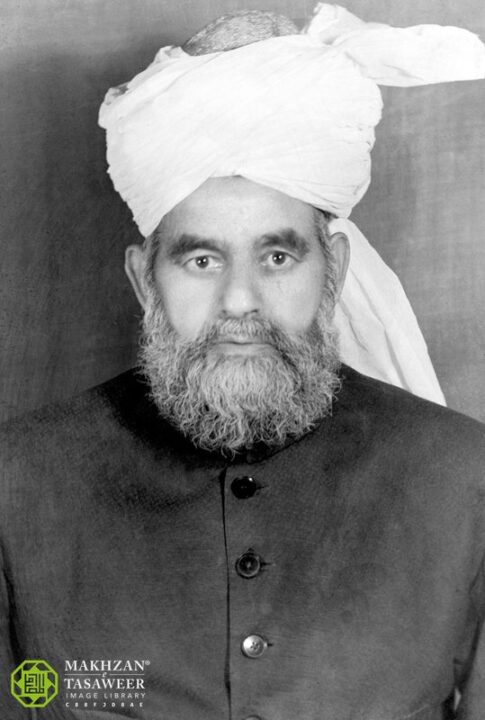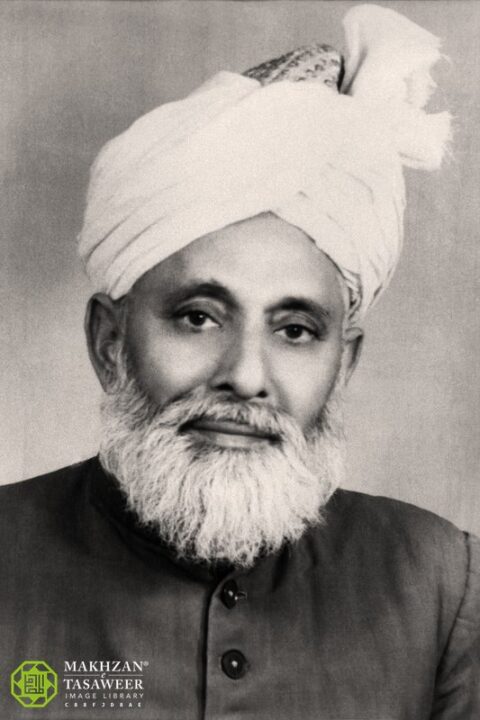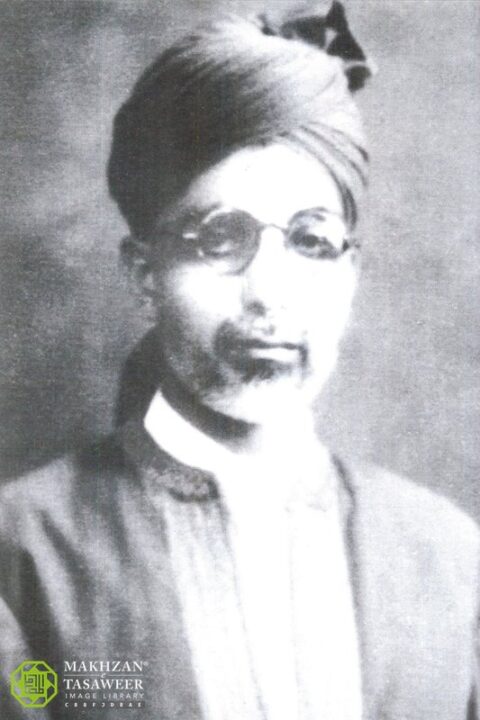A series looking at pioneer missionaries and devotees of the Ahmadiyya Muslim Jamaat who gave precedence to faith over the world.
Awwab Saad Hayat, Al Hakam

Pioneer Ahmadi Muslim missionaries, over their lifetimes of dedication to Islam, bore numerous struggles in the line of duty. They gave precedence to faith over earthly delights and no matter the circumstances, readied themselves to overcome any tempest, physical hardship and life-threatening situations in remote villages and remote settlements.
Hazrat Maulana Jalaluddin Shams’ jihad of arguments in the Middle East
Concerning the foundation of the Jamaat’s mission in Damascus and the extraordinary developments that followed, it is recorded that Hazrat Maulana Jalaluddin Shamsra, aside from leading a fruitful jihad of logical arguments against Christianity, also debated with Muslim scholars who opposed the Jamaat in Damascus. There, the Muslim clerics were exceptionally disturbed at witnessing the foundation and flourishment of Ahmadiyyat in the country. The opposition responded in the same manner that opponents of truth were accustomed to.
In December 1927, a murderous attack was made on Hazrat Maulana Jalaluddin Shamsra. Recalling his time there and this particular incident, Hazrat Maulana Jalaluddin Shamsra narrated that he started receiving death threats via letters. After publishing a tract entitled Al-Jihad al-Islami, in which he proved fighting in the name of religion was not permissible in this era and that this age was the age of preaching with logical arguments, he received a letter from Muslim clerics stating, since he declared religious jihad and fighting for religion as unlawful in this era, it was obligatory on them to shed his blood.
Hazrat Maulana Jalaluddin Shamsra related an incident of 22 December 1927. After performing the Maghrib prayer, he went out to get some food from a nearby shop. On his return, he sensed someone was following him. As he attempted to escape, he was viciously attacked from behind with a dagger. His neighbour’s door was open, he quickly entered and shouted that he had been attacked. He was bleeding profusely and fell unconscious in the doorway of his house. As the police arrived, he was immediately taken to the hospital.
At the time of the attack, Hazrat Maulana Jalaluddin Shamsra was wearing a thick coat due to the severe cold weather. The dagger wound was deep. However, by the sheer grace of Allah, it did not reach his vital organs. A telegram was sent to Hazrat Khalifatul Masih IIra informing him of this incident. Through the grace of Allah, the prayers of Hazrat Khalifatul Masih IIra and the Jamaat, Hazrat Maulana Jalaluddin Shamsra survived.

Hazrat Maulana Abul Atara saved by the Mighty God
Hazrat Maulana Abul Ata Jalandharira was born in 1904. His father had accepted Ahmadiyyat in 1902 at the hand of the Promised Messiahas.
Hazrat Maulana Abul Atara was a devout servant of the Jamaat who served as Principal of Jamia-tul-Mubashirin – later Jamia Ahmadiyya – as Additional Nazir Islah-o-Irshad for Talim-ul-Quran & Waqf-e-Arzi. He also had the honour of serving as a missionary in the Holy Land and other Arab countries from 1931-1936.
During his years of service in Palestine, opponents conspired to have him murdered. Abdullah Asad Odeh Sahib of Jamaat Kababir recorded this incident in his book, Al-Kababir – Baldi, published in 1980. In this book, the unsuccessful conspiracy, which was planned by some wicked people of Haifa, is mentioned. One night, some armed men sat in ambush to murder Hazrat Maulana Abul Atara as he was returning from Kababir. As these mischievous men attempted to open fire, by Allah’s decree, their guns jammed. One of the participants in this conspiracy later confessed to this incident.

Maulana Ghulam Hussain Ayaz Sahib’s resilience and dedication
Born in 1903, Maulana Ghulam Hussain Ayaz received his early education in Faizullah Chak. Soon after completing his primary education, he joined Madrasa-e-Ahmadiyya. Upon passing Maulvi Fazil from Punjab University, he devoted his life to the services of the Jamaat.
On 6 May 1935, a convoy of missionaries, serving under the Tahrik-e-Jadid scheme, left Qadian. This group included Maulvi Ghulam Hussain Ayaz Sahib who was sent to preach in the states of Singapore; Strait of Malacca and Nipiang. Only travel expenses were given to him at the time of departure. He was self-sufficient and accomplished his duties for a long time without any financial aid. He went to Malaya from Singapore on 14 March 1936 and toured many cities and distributed leaflets about Islam Ahmadiyya in English and Malay while facing great opposition. He continued to convey the message of Ahmadiyyat in different islands, states and cities. Seeing the signs of success, the opposition heated up in Malaya in mid-1937.
Muhammad Naseeb Arif Sahib, who was imprisoned in Singapore during World War II, wrote in one of his articles that Maulvi Ghulam Hussain Ayaz Sahib endured many hardships as an Ahmadi missionary. Once, opponents attacked his house and he was compelled to remain inside his house for many days, deprived of food and other necessities. The police also blacklisted him in government records.
1943 and 1944 were financially very difficult for Maulvi Ghulam Hussain Ayaz Sahib. In 1945, the financial condition improved.
Muhammad Naseeb Arif Sahib narrates that at the time of his return from Singapore, when he asked Maulvi Ghulam Hussain Ayaz Sahib to come along with him, Maulvi Ghulam Hussain Ayaz Sahib responded that without the permission of the Khalifa he considered it a sin to move even a step from his posting. He didn’t even say to deliver a message to his family, but instead conveyed his greetings to Hazrat Khalifatul Masih IIra and requested prayers.
When Muhammad Naseeb Arif Sahib returned to India after his release from prison, he gave Maulvi Ghulam Hussain Ayaz Sahib’s greetings to Hazrat Musleh-e-Maudra. He also went to Maulvi Ghulam Hussain Ayaz Sahib’s house and saw that Maulvi Sahib’s daughter, who was two or three months old when Maulvi Ghulam Hussain Ayaz Sahib departed, was now thirteen years old.

The hardships endured by early missionaries also came with the fruits of their labour. Through Maulvi Ghulam Hussain Ayaz Sahib’s preaching efforts, on 11 January 1946, Muhammad Yunus Farooq Sahib accepted Ahmadiyyat. He returned to India after staying in Singapore for about five months. Muhammad Yunus Farooq Sahib wrote a letter to Hazrat Musleh-e-Maudra in which he highlighted the positive impact Maulvi Ghulam Hussain Ayaz Sahib had on him. He wrote that his hard work had a great impression on his heart; he worked so hard in the service of religion that he became old early. Despite his health, he remained busy preaching and calling people to Allah. His daily work routine began at four in the morning and he worked throughout the day till 11 at night. During this period, he did not get even an hour of rest. Throughout the day, he busied himself translating some literature of the Jamaat into Malay and sometimes he would prepare an article. Throughout the day, writes Muhammad Yunus Farooq Sahib, there would be a barrage of questions and objections which Maulvi Sahib would answer and explain.
He spent a great deal of time looking after the moral training and education of the Ahmadi children of Malaya. There was a lot of propaganda against Ahmadis and a greater number of people were fierce enemies. Once, enemies invited Maulvi Ghulam Hussain Ayaz Sahib to their mosque or their house for preaching and when he went, they beat him mercilessly.
Maulvi Ghulam Hussain Ayaz Sahib was not disheartened even in the most difficult situations. Seeing the result of his tireless efforts, said Muhammad Yunus Farooq Sahib, one is compelled to acknowledge no less than a miracle of Ahmadiyyat. He not only established the Jamaat there but also perfected the moral training and upbringing of the members of the Jamaat.
Hazrat Khalifatul Masih IIra, whilst mentioning the sacrifices of Maulvi Ghulam Hussain Ayaz Sahib and his wonderful results, said that in Malaya, Maulvi Ghulam Hussain Sahib Ayaz would face severe opposition; however, by the grace of Allah and the sacrifices of Maulvi Ghulam Hussain Ayaz Sahib, those who returned from Malaya have said around 70-80 well-to-do hotel owners and respectable people had accepted Ahmadiyyat and the Jamaat was growing day by day.
Maulvi Ghulam Hussain Ayaz Sahib left Qadian, India for Singapore on 6 May 1935 and returned to Rabwah, Pakistan (as the headquarters of the Jamaat had moved to Pakistan following the partition) 15 years later, on 24 November 1950. He was later posted to Singapore again on 8 October 1956. After living in Singapore for some time, he was posted in Borneo and passed away in October 1959.

